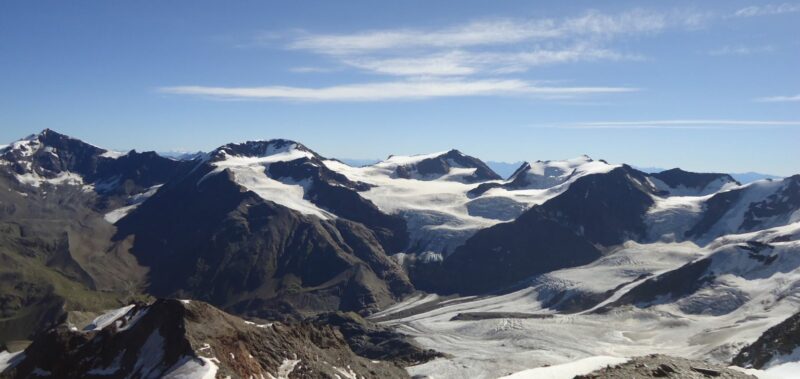There was a scientific study published recently about microplastic contamination in the glaciers in the Italian Alps, lots of it. So keep reading.

I started searching about this after somebody on a Facebook group mentioned the issue. One particular research study attracted my attention, a paper by R. Ambrosini et al. The researchers concluded that the ablation area of the Forni Glacier should contain 131–162 million plastic items.
They conducted the research on the largest Italian glacier, the Forni Glacier which is close to Bormio. I have been there many times in the past. The top picture above shows the glacier area as seen from the summit of Pizzo Tresero which I climbed a few years ago.
The results obtained in this research are in agreement with some other publications where such studies were performed on Tibet’s glaciers. This means that the problem is global and not specific to the Alps only.
How does plastic get to such high elevations? This is all about atmospheric transport (winds and air streams) and consequent wet and dry deposition. So those are products of human activities in the lower areas that are transported by wind to high altitudes.
The materials found in the analysis were:
They also write that around 39% of the plastic could not be identified, so it is clear that there is much more of this stuff in the glaciers.
From what they write, and if I understand correctly, they actually collected particles that were larger than some value. This is because they were able to analyze only particles that were large enough. So this means that there is much more of this material out there.
Now, for hikers and mountaineers, the problem is not directly with those larger particles. In fact, those that they filtered out are the main reason for concern. But the larger particles degrade and disintegrate due to photodegradation, mechanical degradation, oxidation, etc. So eventually, they all will end up in the water as micron and submicron particles and if you drink such water, they can accumulate in the body.
This is why it is essential to use some water filtration system even if the water looks crystal clear and fresh. If you follow the given link you will see that the water filters currently on the market can have pores as small as 0.01 micron. One great example is this MSR Guardian which is in the class of purifiers with the pores of 0.02 microns.
So how small pores in the filters we should use? In fact, nobody knows, the plastic is out there and it can be of any size. I would say the smaller the pores the better filtration. Note that with such small pores you will remove viruses as well, read more about viruses in glaciers in my separate text.
You can also follow the link to my separate text and read a bit more about risks of drinking glacier water.
Thank you for reading. Note, we publish texts in this site regularly, so bookmark it and stay informed. We also have a weekly newsletter, so subscribe, there is a subscription form below. Have a nice day.
Leave a Reply